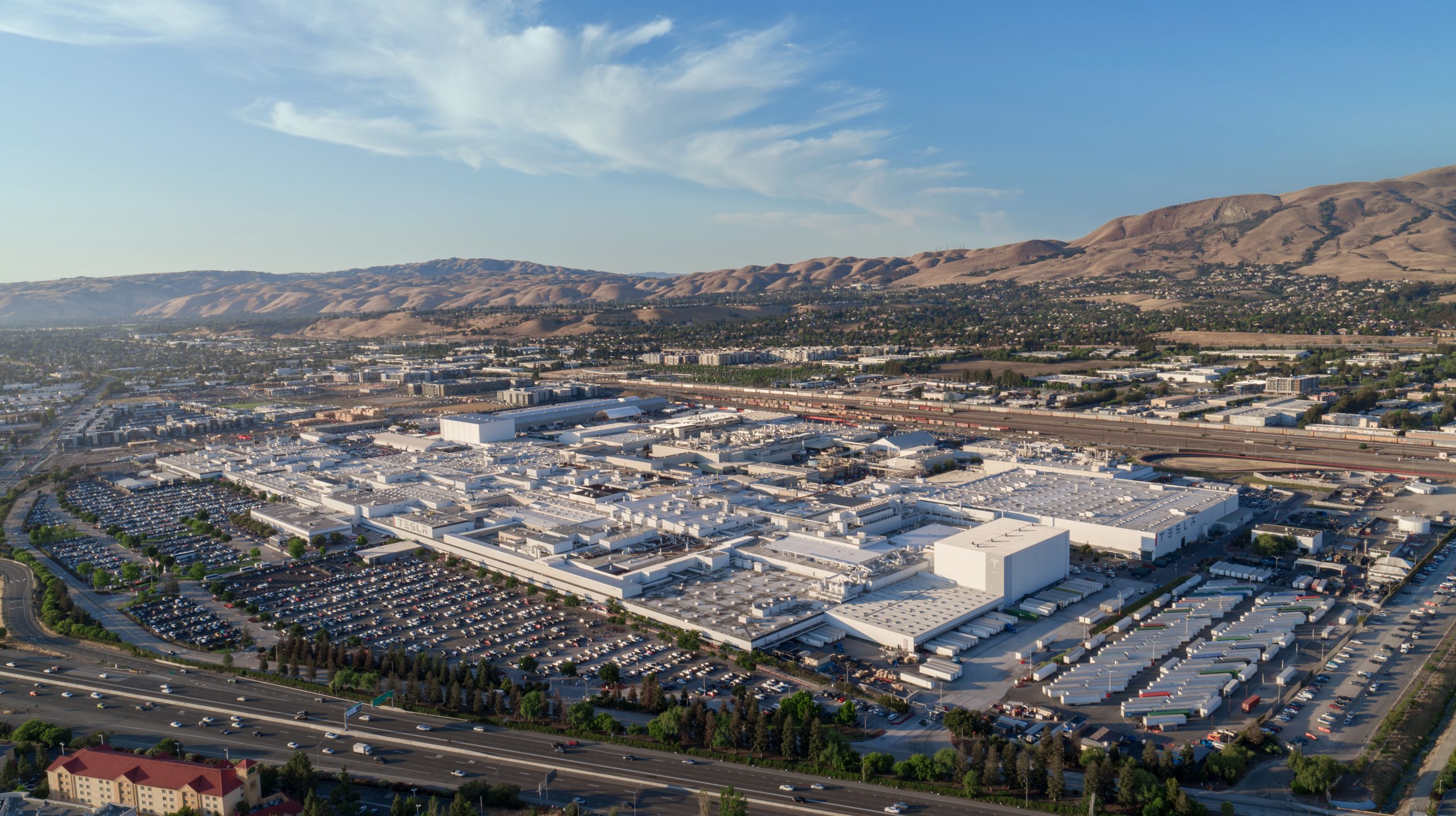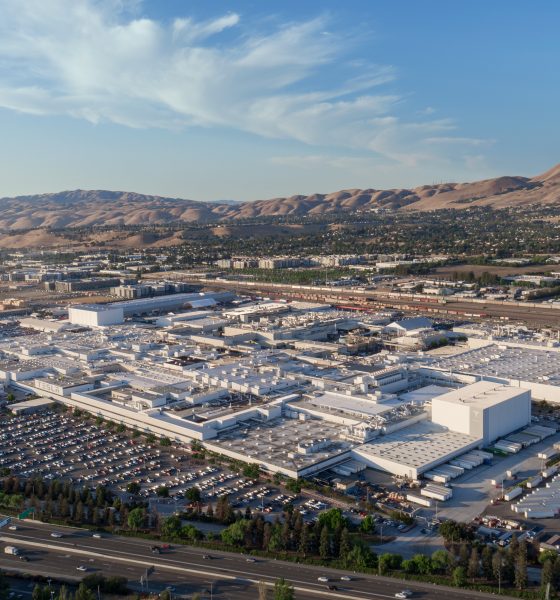Global Equities Research analyst Trip Chowdhry forecasted that Tesla is slated for a “Super Record Quarter” this year. Based on observations from the Fremont Factory and Giga Texas, the TSLA analyst estimated that Tesla would deliver more than 500,000 units in Q4 2022.
Chowdhry’s Fremont Factory Observations
Chowdhry visited Tesla’s Fremont Factory in California, making a few key observations that led to his 500k+ estimate for the fourth quarter. The analyst’s statements were similar to Canaccord Genuity analyst George Gianarikas’ comments after visiting the Fremont Factory.
Chowdhry observed Tesla employees’ dedication to their work, noting that their motivation was unparalleled in the car industry. He added that Tesla employees worked throughout Labor Day Weekend. Similarly, Gianarikas was “mesmerized by the factory’s chaotic symphony and employee morale.”
The TSLA analysts also highlighted that the Fremont Factory’s production timeframe—the time it takes for the vehicle to reach shipping trucks—has become at least 10% more efficient compared to Q2 2022. Plus, he noted that Model S Plaid production and deliveries have significantly ramped.
As of this writing, delivery estimates for the Model S Plaid are between October to November 2022. At the beginning of 2022, the Model S Plaid’s delivery estimate was 2-6 weeks. By the end of the first quarter, delivery estimates were between June to July 2022.
Chowdhry on Tesla Giga Texas
The analyst observed that Elon Musk slept in Gigafactory Texas for about three nights in August, hinting at some major work happening in Tesla’s new HQ. Giga Texas has ramped production recently.
He also noted that multiple delivery trucks filled with Model Y units started leaving Giga Texas on September 1, suggesting that Austin-made Model Y vehicles will begin rolling out to more customers soon.
Chowdhry’s Q4 2022 Delivery Estimates
- The Fremont Factory = 145,000
- Giga Shanghai = 246,000
- Giga Berlin = 60,000
- Giga Texas = 60,000
- TOTAL: 511,000 units
Tesla reported producing 305,407 units for the first quarter and delivering 310,048 vehicles. The company’s production and delivery numbers decreased in Q2 2022 partly due to Covid shutdowns and restrictions in Giga Shanghai. Tesla produced 258,580 units in the second quarter and delivered 254,695 cars.
Tesla China temporarily shut down its Model Y and Model 3 assembly lines from mid-July to early August to install upgrades. The Model Y and Model 3 assembly line upgrades are expected to significantly increase Giga Shanghai’s output. Recently, the CPCA’s Secretary-General Cui Dongshu forecasted that Giga Shanghai would report 77,000 unit sales for August.
As for Giga Berlin, it has already reached a production output of 1,000 units per week. It is currently aiming to produce 2,000 vehicles per week. In August, Tesla Germany switched to a two-shift system after employing around 5,000 workers in Grünheide.
In total, Tesla has delivered 564,743 units in 2022 as of the second quarter. The EV manufacturer wants to grow 50%+ every year, and it seems on track for 2022.
Contact me at maria@teslarati.com or via Twitter @Writer_01001101.

News
Nvidia CEO Jensen Huang explains difference between Tesla FSD and Alpamayo
“Tesla’s FSD stack is completely world-class,” the Nvidia CEO said.

NVIDIA CEO Jensen Huang has offered high praise for Tesla’s Full Self-Driving (FSD) system during a Q&A at CES 2026, calling it “world-class” and “state-of-the-art” in design, training, and performance.
More importantly, he also shared some insights about the key differences between FSD and Nvidia’s recently announced Alpamayo system.
Jensen Huang’s praise for Tesla FSD
Nvidia made headlines at CES following its announcement of Alpamayo, which uses artificial intelligence to accelerate the development of autonomous driving solutions. Due to its focus on AI, many started speculating that Alpamayo would be a direct rival to FSD. This was somewhat addressed by Elon Musk, who predicted that “they will find that it’s easy to get to 99% and then super hard to solve the long tail of the distribution.”
During his Q&A, Nvidia CEO Jensen Huang was asked about the difference between FSD and Alpamayo. His response was extensive:
“Tesla’s FSD stack is completely world-class. They’ve been working on it for quite some time. It’s world-class not only in the number of miles it’s accumulated, but in the way it’s designed, the way they do training, data collection, curation, synthetic data generation, and all of their simulation technologies.
“Of course, the latest generation is end-to-end Full Self-Driving—meaning it’s one large model trained end to end. And so… Elon’s AD system is, in every way, 100% state-of-the-art. I’m really quite impressed by the technology. I have it, and I drive it in our house, and it works incredibly well,” the Nvidia CEO said.
Nvidia’s platform approach vs Tesla’s integration
Huang also stated that Nvidia’s Alpamayo system was built around a fundamentally different philosophy from Tesla’s. Rather than developing self-driving cars itself, Nvidia supplies the full autonomous technology stack for other companies to use.
“Nvidia doesn’t build self-driving cars. We build the full stack so others can,” Huang said, explaining that Nvidia provides separate systems for training, simulation, and in-vehicle computing, all supported by shared software.
He added that customers can adopt as much or as little of the platform as they need, noting that Nvidia works across the industry, including with Tesla on training systems and companies like Waymo, XPeng, and Nuro on vehicle computing.
“So our system is really quite pervasive because we’re a technology platform provider. That’s the primary difference. There’s no question in our mind that, of the billion cars on the road today, in another 10 years’ time, hundreds of millions of them will have great autonomous capability. This is likely one of the largest, fastest-growing technology industries over the next decade.”
He also emphasized Nvidia’s open approach, saying the company open-sources its models and helps partners train their own systems. “We’re not a self-driving car company. We’re enabling the autonomous industry,” Huang said.
Elon Musk
Elon Musk confirms xAI’s purchase of five 380 MW natural gas turbines
The deal, which was confirmed by Musk on X, highlights xAI’s effort to aggressively scale its operations.

xAI, Elon Musk’s artificial intelligence startup, has purchased five additional 380 MW natural gas turbines from South Korea’s Doosan Enerbility to power its growing supercomputer clusters.
The deal, which was confirmed by Musk on X, highlights xAI’s effort to aggressively scale its operations.
xAI’s turbine deal details
News of xAI’s new turbines was shared on social media platform X, with user @SemiAnalysis_ stating that the turbines were produced by South Korea’s Doosan Enerbility. As noted in an Asian Business Daily report, Doosan Enerbility announced last October that it signed a contract to supply two 380 MW gas turbines for a major U.S. tech company. Doosan later noted in December that it secured an order for three more 380 MW gas turbines.
As per the X user, the gas turbines would power an additional 600,000+ GB200 NVL72 equivalent size cluster. This should make xAI’s facilities among the largest in the world. In a reply, Elon Musk confirmed that xAI did purchase the turbines. “True,” Musk wrote in a post on X.
xAI’s ambitions
Recent reports have indicated that xAI closed an upsized $20 billion Series E funding round, exceeding the initial $15 billion target to fuel rapid infrastructure scaling and AI product development. The funding, as per the AI startup, “will accelerate our world-leading infrastructure buildout, enable the rapid development and deployment of transformative AI products.”
The company also teased the rollout of its upcoming frontier AI model. “Looking ahead, Grok 5 is currently in training, and we are focused on launching innovative new consumer and enterprise products that harness the power of Grok, Colossus, and 𝕏 to transform how we live, work, and play,” xAI wrote in a post on its website.
Elon Musk
Elon Musk’s xAI closes upsized $20B Series E funding round
xAI announced the investment round in a post on its official website.

xAI has closed an upsized $20 billion Series E funding round, exceeding the initial $15 billion target to fuel rapid infrastructure scaling and AI product development.
xAI announced the investment round in a post on its official website.
A $20 billion Series E round
As noted by the artificial intelligence startup in its post, the Series E funding round attracted a diverse group of investors, including Valor Equity Partners, Stepstone Group, Fidelity Management & Research Company, Qatar Investment Authority, MGX, and Baron Capital Group, among others.
Strategic partners NVIDIA and Cisco Investments also continued support for building the world’s largest GPU clusters.
As xAI stated, “This financing will accelerate our world-leading infrastructure buildout, enable the rapid development and deployment of transformative AI products reaching billions of users, and fuel groundbreaking research advancing xAI’s core mission: Understanding the Universe.”
xAI’s core mission
Th Series E funding builds on xAI’s previous rounds, powering Grok advancements and massive compute expansions like the Memphis supercluster. The upsized demand reflects growing recognition of xAI’s potential in frontier AI.
xAI also highlighted several of its breakthroughs in 2025, from the buildout of Colossus I and II, which ended with over 1 million H100 GPU equivalents, and the rollout of the Grok 4 Series, Grok Voice, and Grok Imagine, among others. The company also confirmed that work is already underway to train the flagship large language model’s next iteration, Grok 5.
“Looking ahead, Grok 5 is currently in training, and we are focused on launching innovative new consumer and enterprise products that harness the power of Grok, Colossus, and 𝕏 to transform how we live, work, and play,” xAI wrote.










